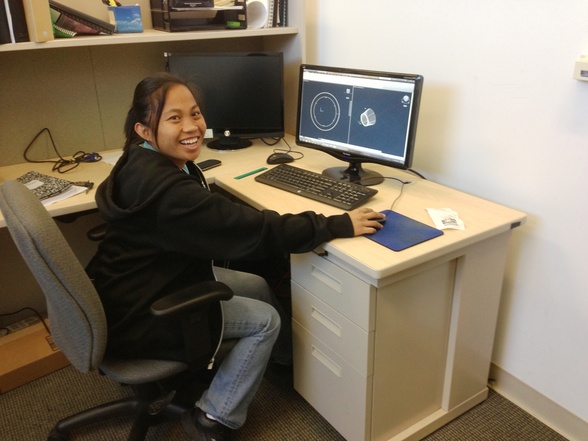Chriselle was born in the Philippines, raised on the island of Maui, and moved to O‘ahu for college. She is currently an undergraduate at UH Manoa, pursuing her BS degree in Mechanical Engineering. Chriselle is an SAE International member, and has recently participated in the SAE Micro Aero Competition, which involved designing and manufacturing a small, unmanned aircraft vehicle. In her spare time, Chriselle enjoys hanging out with her friends and family, drawing, hiking, and listening to music.
Home Island: Maui
Institution when accepted: UH Manoa
Chriselle now works as an engineer for DKIST on Maui
Project Title: An Optimal Baffle-System Design for the Harlingten H-80 Telescope
Project Site: Institute for Astronomy, Maui
Mentors: Stan Truitt, Jeff Kuhn
The objective of the project was to design an easily modified baffle system prototype for the Harlingten H-80 telescope that would eliminate most of the stray light entering the sensor without limiting the contrast and resolution of the object that will be viewed. Baffles were designed for the H-80 with sensors which have one or five arc-minute field of view. The baffles were also designed to be rigid enough to withstand operating wind conditions. Furthermore, relatively low central obstructions for the telescope were also considered in the design of the primary and secondary baffles. In order to calculate for the best baffle design for the H-80, the optimal telescope parameters were first determined using Zemax, a ray-tracing program. Then using an algorithm that utilized ray-tracing formulas in a two-mirror telescope based on arbitrary positions of the aperture stop the baffle design parameters were found. After determining the baffle length and diameters, a mounting system that would allow the baffles to be easily attached and modified was also considered to complete the baffle system design. Finally, baffles were fabricated in order to test the effectiveness of the design. Additionally, the current H-80 secondary mirror will be replaced; therefore, the optical design as well as the baffle design had to be re-optimized and modified for a different secondary mirror. In the future, modifications will need to be done in the to the baffle design to allow for various fields of view.
